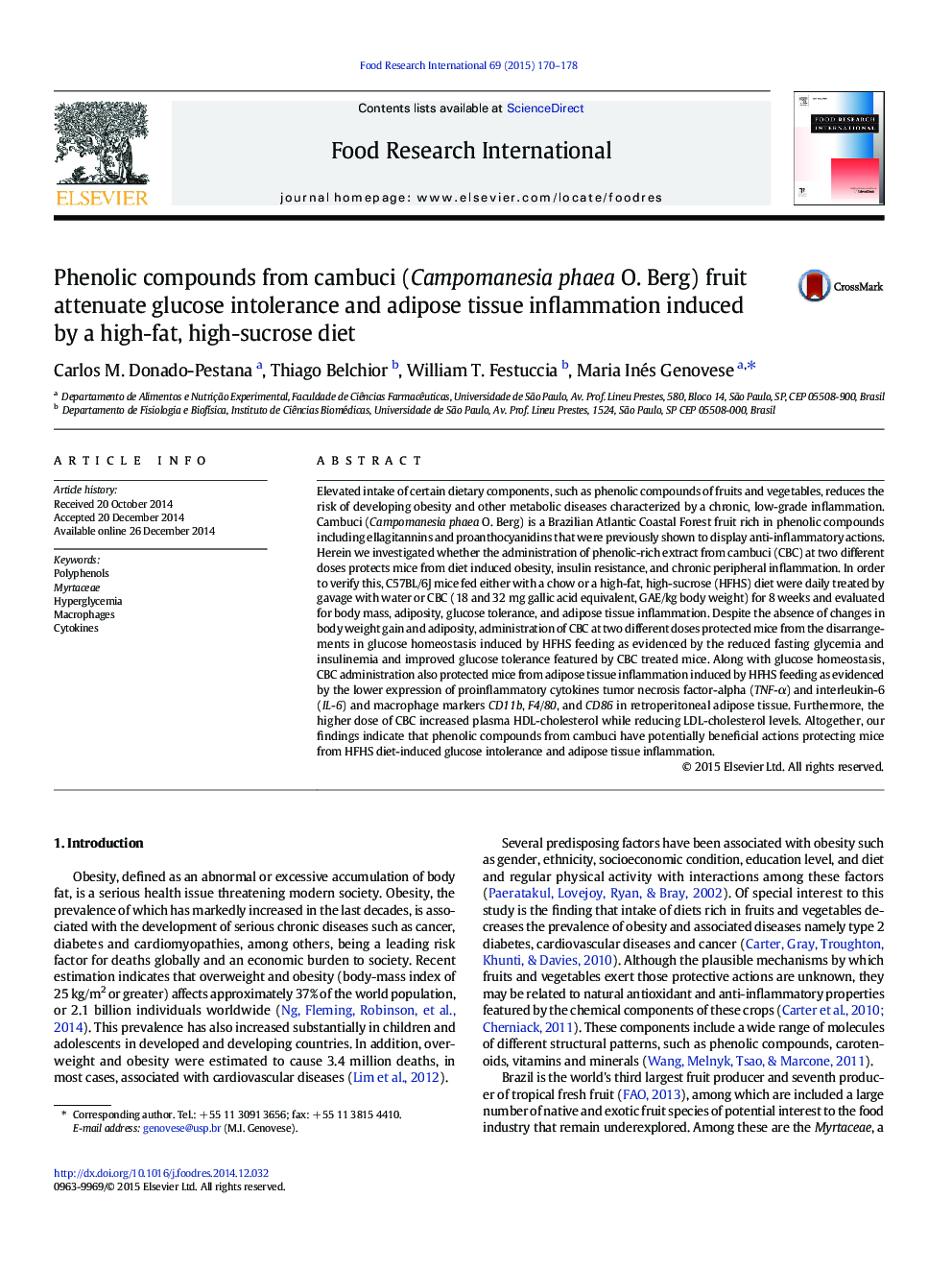| کد مقاله | کد نشریه | سال انتشار | مقاله انگلیسی | نسخه تمام متن |
|---|---|---|---|---|
| 6395578 | 1628477 | 2015 | 9 صفحه PDF | دانلود رایگان |

- Phenolic compounds from cambuci were evaluated in nutritional model of obesity.
- Phenolics from cambuci improved glucose tolerance, glycemia, and dyslipidemia.
- Phenolics from cambuci reduce adipose inflammation by macrophage accumulation.
- Phenolics lead to a decrease in the production of pro-inflammatory cytokines.
Elevated intake of certain dietary components, such as phenolic compounds of fruits and vegetables, reduces the risk of developing obesity and other metabolic diseases characterized by a chronic, low-grade inflammation. Cambuci (Campomanesia phaea O. Berg) is a Brazilian Atlantic Coastal Forest fruit rich in phenolic compounds including ellagitannins and proanthocyanidins that were previously shown to display anti-inflammatory actions. Herein we investigated whether the administration of phenolic-rich extract from cambuci (CBC) at two different doses protects mice from diet induced obesity, insulin resistance, and chronic peripheral inflammation. In order to verify this, C57BL/6J mice fed either with a chow or a high-fat, high-sucrose (HFHS) diet were daily treated by gavage with water or CBC (18 and 32 mg gallic acid equivalent, GAE/kg body weight) for 8 weeks and evaluated for body mass, adiposity, glucose tolerance, and adipose tissue inflammation. Despite the absence of changes in body weight gain and adiposity, administration of CBC at two different doses protected mice from the disarrangements in glucose homeostasis induced by HFHS feeding as evidenced by the reduced fasting glycemia and insulinemia and improved glucose tolerance featured by CBC treated mice. Along with glucose homeostasis, CBC administration also protected mice from adipose tissue inflammation induced by HFHS feeding as evidenced by the lower expression of proinflammatory cytokines tumor necrosis factor-alpha (TNF-α) and interleukin-6 (IL-6) and macrophage markers CD11b, F4/80, and CD86 in retroperitoneal adipose tissue. Furthermore, the higher dose of CBC increased plasma HDL-cholesterol while reducing LDL-cholesterol levels. Altogether, our findings indicate that phenolic compounds from cambuci have potentially beneficial actions protecting mice from HFHS diet-induced glucose intolerance and adipose tissue inflammation.
Journal: Food Research International - Volume 69, March 2015, Pages 170-178